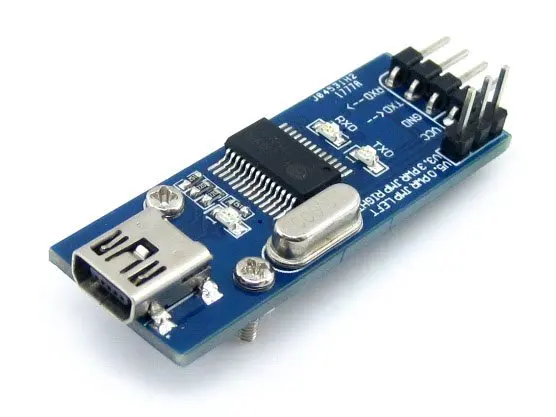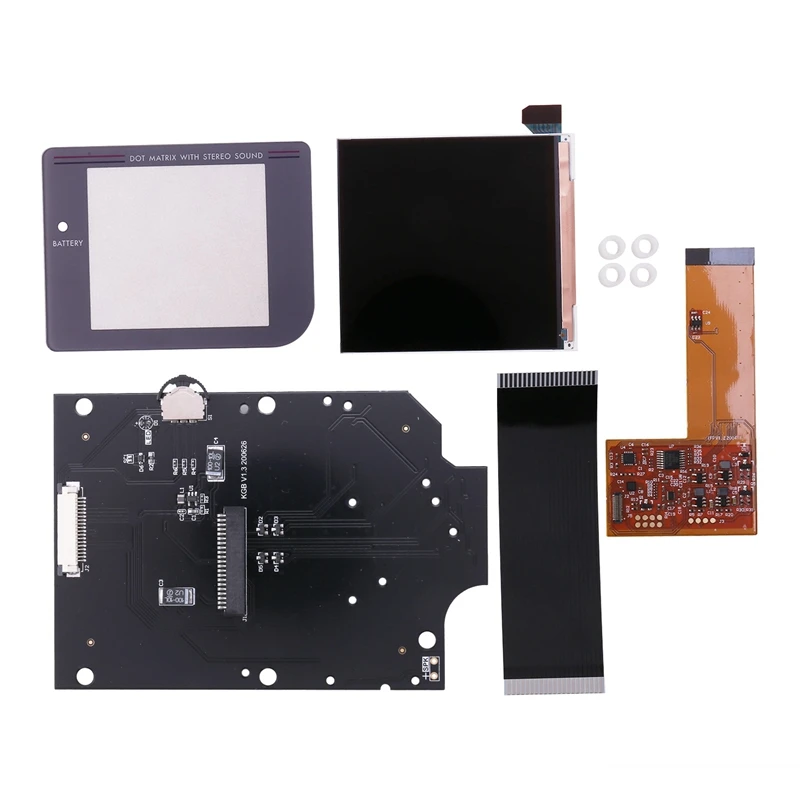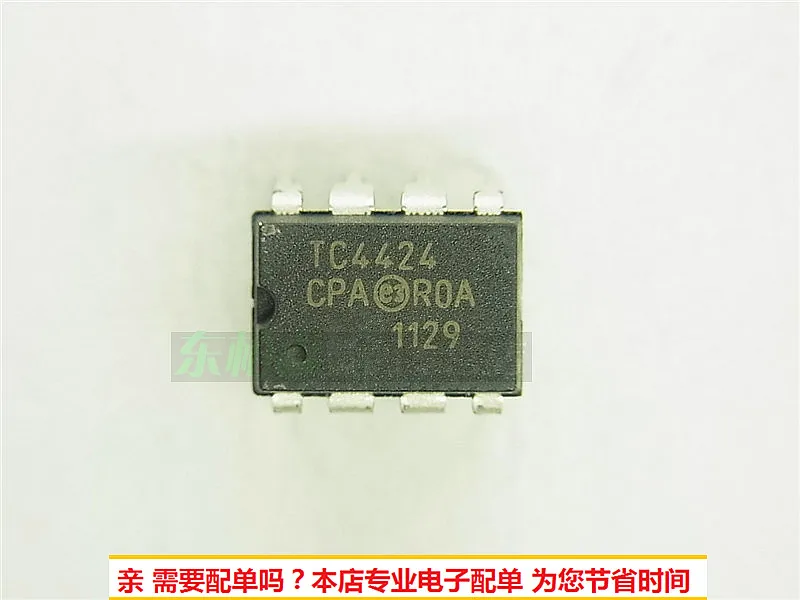Новое поступление
Подходит для GB 36 Ретро Забавный DMG пиксель IPS ЖК-дисплей комплект светильник
BLW86 BLW87 BLV10 BLV11 BLV21 BLF346 | Электроника
100% новый и оригинальный TC4424CPA DIP8 TC4424 | Электроника
Беспроводной контроллер с рукояткой для PS4 Elite/Slim/Pro геймпад вибрацией 6-осевой
10 шт./партия резиновый силиконовый чехол для большого пальца аналоговый рукоятки
Оригинальный Новый DVD-привод для Ninetendo Wii D2C D2B D2E легкий оптический привод Dvd Rom
К-92 транзистор пакет малой мощности транзисторы 17 моделей 3 904 390 685 508 050 другие 10 |
Характеристики
STM32 Board Open103C Standard STM32F103CBT6 STM32F103 ARM Cortex-M3 Development + PL2303 USB UART Module Kit | Электроника
История изменения цены
*Текущая стоимость уже могла изменится. Что бы узнать актуальную цену и проверить наличие товара, нажмите "Добавить в корзину"
| Месяц | Минимальная цена | Макс. стоимость | Цена |
|---|---|---|---|
| Sep-17-2025 | 0.7 руб. | 0.81 руб. | 0 руб. |
| Aug-17-2025 | 0.98 руб. | 0.63 руб. | 0 руб. |
| Jul-17-2025 | 0.14 руб. | 0.1 руб. | 0 руб. |
| Jun-17-2025 | 0.72 руб. | 0.12 руб. | 0 руб. |
| May-17-2025 | 0.39 руб. | 0.73 руб. | 0 руб. |
| Apr-17-2025 | 0.63 руб. | 0.57 руб. | 0 руб. |
| Mar-17-2025 | 0.0 руб. | 0.40 руб. | 0 руб. |
| Feb-17-2025 | 0.76 руб. | 0.31 руб. | 0 руб. |
| Jan-17-2025 | 0.58 руб. | 0.90 руб. | 0 руб. |
Описание товара







Communication interfaces:1 x 8I/Os, 1 x ONE-WIRE, 1 x CAN, 1 x USB Device etc.
Programming interface:JTAG/SWD
Eamples:Comes with examples in C, C/OS-II
Place of Origin:Guangdong, China (Mainland)
STM32 development board designed for STM32F103C series, features the STM32F103CBT6 MCU, and integrates various standard interfaces, pretty easy for peripheral expansions.

Overview
Open103C is an STM32 development board that features an STM32F103CBT6 device as the microcontroller. There are further expansions with various optional accessory boards for specific application. The modular and open design makes it the ideal for starting application development with STM32F family.
What\\\'s On Board

- STM32F103CBT6: the high performance STM32 MCU which features
- Core: ARM Cortex-M3 32-bit RISC
- Operating Frequency: 72MHz, 1.25 DMIPS/MHz
- Operating Voltage: 2-3.6V
- Package: LQFP48
- I/Os: 37
- Memories: 128kB Flash, 20kB RAM
- Communication Interfaces: 2 x SPI, 3 x USART, 2 x I2C, 1 x USB, 1 x CAN
- AD & DA converters: 2 x AD (12-bit, 1s, shares 10 channels)
- Debugging/Programming: supports JTAG/SWD (serial wire debug) interfaces, supports IAP
- AMS1117-3.3: 3.3V voltage regulator
- Power supply switch: 5V DC or USB
- Power indicator
- LEDs: for indicating I/O status or program debugging running state
- Reset button
- User key: for I/O input test
- Joystick: for I/O input test (five positions)
- 32.768K crystal oscillator: used for internal RTC, also supports clock calibration
- 8M crystal oscillator: enables the MCU run at 72M frequency by frequency multiplication
- 8 I/O Interface: easily connects to keypad, motor, etc.
- CAN interface: communicates with accessory board which features the CAN device conveniently
- SPI1 / SPI2 interface
- easily connects to SPI peripherals such as FLASH (AT45DBxx), SD card, MP3, etc.
- convenient for connecting AD module, thanks to the SPI1 alternative AD function
- I2C1 / I2C2 interface: easily connects to I2C peripherals such as I/O expander (PCF8574), EEPROM (AT24Cxx), etc.
- LCD interface: easily connects to the touch screen LCD
- ONE-WIRE interface: easily connects to ONE-WIRE devices (TO-92 package), such as temperature sensor (DS18B20), electronic registration number (DS2401), etc.
- USART1 interface: easily connects to RS232, RS485, USB TO 232
- USART2 interface: easily connects to RS232, RS485, USB TO 232
- USB port: USB communication between board and PC
- 5V DC jack
- 5V/3.3 V power input/output, usually used for power output, or common ground with other user board
- MCU pins connector: all the MCU pins are accessible on expansion connectors for further expansion
- JTAG/SWD interface: for debugging/programming
- Boot mode selection: for configuring the BOOT0 and BOOT1 pins
- USB enable jumper
- short the jumper to enable the PC auto detection while USB connecting
- open the jumper to disable
- LEDs jumper
- short the jumper to connect the LEDs to I/Os used in example code
- open the jumper to connect the LEDs to other custom pins via jumper wires
- User key jumper
- short the jumper to connect the user key to I/Os used in example code
- open the jumper to connect the user key to other custom pins via jumper wires
- Joystick jumper
- short the jumper to connect the joystick to I/Os used in example code
- open the jumper to connect the joystick to other custom pins via jumper wires
- VBAT selection jumper
- short the jumper to use system power supply
- open the jumper to connect the VBAT to external power, such as battery
Photos

Open103C Development Board

Connecting to touch screen LCD

Connecting to debugger
Connecting to various peripherals

Connecting to touch screen LCD

Connecting to RS232 Board via USART

Connecting to RS485 Board via USART

Connecting to USB UART Board via USART

Connecting to CAN Board via CAN

Connecting to Ethernet Board via SPI

Connecting to VS1003B MP3 Board via SPI

Connecting to NRF24L01 RF Board via SPI

8 Push Buttons on the 8Bit I/O

Connecting to 5 IO Keypad

Connecting to AD Keypad

Connecting to EEPROM Board via I2C

Multi I2C peripheral Module connected to the I2C bus

Connecting to DataFlash Board via SPI

Connecting to Micro SD Board

Connecting to any accessory board you need
Note:
The Open103C supports programming via STM32 USART bootloader, a USB TO UART accessory board is also provided in the package.
The Open103C does NOT integrate any debugging function, a debugger is required.
The Open103C Standard includes only ONE accessory board -- PL2303 USB UART Board (mini).
JTAG/SWD Interfaces
The figure 1, and 2 show the header pinouts of JTAG/SWD interface
Figure 1. JTAG Header Pinout Figure 2. SWD Header Pinout
Figure 2. SWD Header Pinout 
Development Resources
The User Guide CD includes development resources listed as follows:
- Related software (KEIL etc.)
- Demo code (examples in C, C/OS-II)
- Schematic (PDF)
- STM32 development documentations (Datasheet etc.)
Package Contains
- Open103C development board x 1
- PL2303 USB UART Board (mini) x 1
- USB type A to Mini-B cable x 1
- 4-pin wire x 2
- 2-pin wire x 2
- USB power cable x 1
- User Guide CD x 1
 2
2  3
3  4
4  5
5  6
6  7
7 
For buyer

Смотрите так же другие товары:















